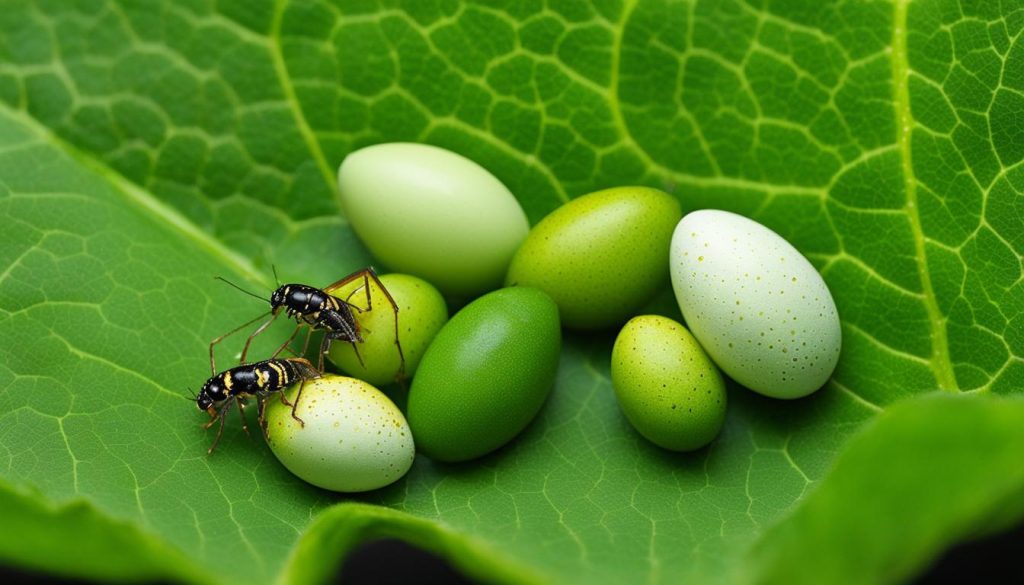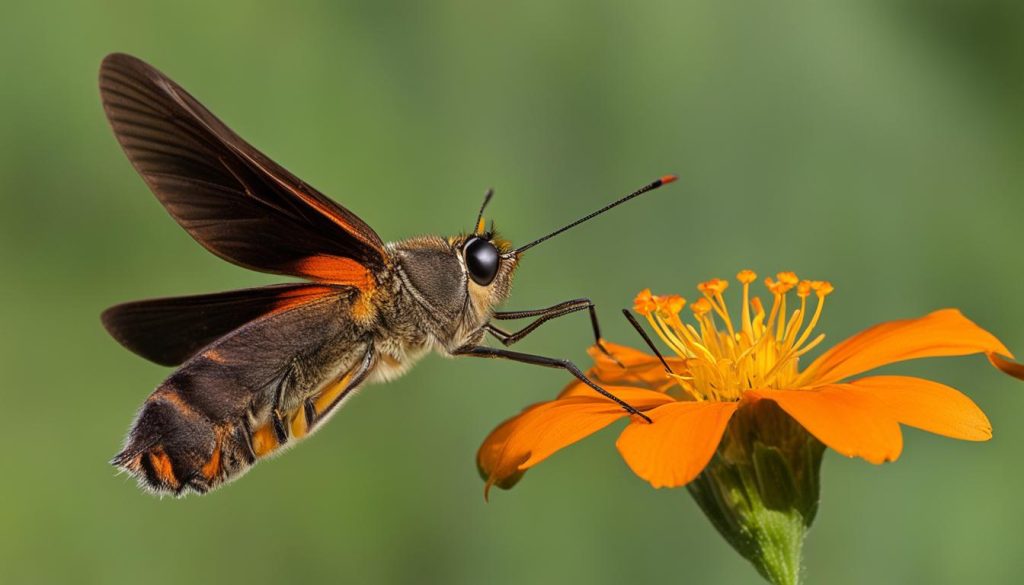Pelopidas mathias, commonly known as the Swarming Skipper, is a butterfly species that exhibits unique behavior and characteristics. It has a fascinating life cycle and occupies specific habitats. The conservation status of Pelopidas mathias is of concern, and understanding its behavior, diet, and reproduction can contribute to conservation efforts.
Key Takeaways:
- Pelopidas mathias, also known as the Swarming Skipper, is a butterfly species with interesting behavior and characteristics.
- It has a fascinating life cycle, starting as an egg and going through several instars before transforming into an adult butterfly.
- Pelopidas mathias is primarily found in grasslands and open areas with abundant vegetation.
- The conservation status of Pelopidas mathias is of concern, with habitat loss and degradation being major threats.
- Efforts are being made to protect its habitats and raise awareness about the importance of conserving this butterfly species.
The Life Cycle of Pelopidas Mathias

Pelopidas mathias, also known as the Swarming Skipper, undergoes a fascinating life cycle that spans several stages. Understanding its life cycle is crucial to appreciating the beauty of this butterfly species.
Egg Stage
The life cycle of Pelopidas mathias begins with the egg stage. The female butterfly lays her eggs on the leaves or stems of its host plant, typically a species of grass or wildflower.
Caterpillar Stage
Upon hatching, the caterpillar emerges from the egg and starts feeding on the host plant. As it grows, the caterpillar goes through several instar stages, shedding its skin and increasing in size.
The caterpillar of Pelopidas mathias is voracious, consuming large amounts of plant material to fuel its growth.
Chrysalis Stage and Metamorphosis
Once the caterpillar has reached its full size, it forms a chrysalis or pupa, where it undergoes metamorphosis. Inside the chrysalis, the caterpillar transforms into a fully formed butterfly.
Adult Butterfly Stage
After a period of time, the adult butterfly emerges from the chrysalis. It unfurls its wings and begins its journey as a winged beauty.
Habitat and Behavior
Pelopidas mathias can be found in a variety of habitats, including grasslands, open fields, and gardens. These butterflies are often observed fluttering around their preferred habitats, searching for nectar and mates.
Pelopidas mathias exhibits territorial behavior, fiercely defending its territory from intruders. This behavior is commonly observed during the mating season, where males engage in swarming behavior to attract females.
By understanding the life cycle, habitat, and behavior of Pelopidas mathias, we can appreciate and protect these remarkable butterflies.
The Habitat and Conservation Status of Pelopidas Mathias
Pelopidas mathias, also known as the Swarming Skipper, thrives in grasslands and open areas with rich vegetation. Its ideal habitat consists of a diverse combination of grasses and wildflowers, providing both nectar sources for adult butterflies and host plants for caterpillars to feed on. These grasslands and open areas offer the necessary resources for Pelopidas mathias to complete its life cycle.
However, the conservation status of Pelopidas mathias is a concern. The destruction and degradation of its habitat pose significant threats to the butterfly’s population. Human activities, such as agricultural expansion and urban development, contribute to habitat loss. Climate change and the excessive use of pesticides also impact the availability of suitable habitats for Pelopidas mathias.
Efforts are being made to conserve the habitats of Pelopidas mathias and protect the species from further decline. Conservation organizations collaborate with local communities and policymakers to promote sustainable land management practices and raise awareness about the importance of preserving this unique butterfly species. Implementing effective conservation strategies is crucial to ensure the survival of Pelopidas mathias and maintain the balance of ecosystems it inhabits.
Conservation Status of Pelopidas Mathias
The Pelopidas mathias species is currently classified under various conservation statuses depending on geographical regions. For example, the IUCN Red List classifies the conservation status of Pelopidas mathias in Australia as “Least Concern.” However, it is important to note that the conservation status may vary across different regions due to local factors such as habitat availability and population size.
Pelopidas Mathias: Behavior and Diet

Pelopidas mathias, also known as the Swarming Skipper, exhibits fascinating behavior and has unique dietary preferences. Let’s explore the intriguing behavior patterns and feeding habits of this remarkable butterfly species.
Behavior
Pelopidas mathias showcases territorial defense as one of its prominent behaviors. It aggressively chases away intruders from its designated territory, ensuring its control over essential resources and mating opportunities. This territorial behavior is crucial for the survival and reproductive success of the species.
Additionally, Pelopidas mathias engages in swarming behavior during mating season. Swarms of male butterflies gather to attract females, creating a mesmerizing display of fluttering wings. The swarming behavior serves as a mechanism for finding suitable mates and maximizing reproductive success.
Diet
The diet of Pelopidas mathias primarily consists of nectar obtained from various flowering plants. These butterflies are particularly drawn to tubular-shaped flowers that provide easy access to their proboscis. By visiting a wide range of flowers, Pelopidas mathias plays a crucial role in pollination, promoting plant reproduction and diversity.
In addition to nectar, adult Pelopidas mathias butterflies also require minerals to fulfill their nutritional needs. To obtain these minerals, they often engage in a behavior known as mud-puddling. During mud-puddling, the butterflies sip mineral-rich water from muddy areas or damp soil, supplementing their diet and supporting their overall health.
To summarize, Pelopidas mathias demonstrates unique behavior, including territorial defense and swarming behavior during mating. Its diet mainly consists of nectar from various flowering plants, with a preference for tubular-shaped flowers. Additionally, these butterflies engage in mud-puddling to obtain essential minerals. Understanding these behaviors and dietary preferences is essential for the conservation and protection of this beautiful butterfly species.
Conservation Efforts for Pelopidas Mathias
As the conservation status of Pelopidas mathias continues to be a cause for concern, various initiatives have been initiated to protect and support this unique butterfly species. These efforts are aimed at preserving its habitats, promoting awareness among the public and policymakers, and implementing sustainable land management practices.
One crucial aspect of conservation involves safeguarding and restoring the natural habitats of Pelopidas mathias. This includes protecting grasslands and open areas with a diverse vegetation mix that serves as both nectar sources for adults and host plants for their caterpillars. By preserving these habitats, we can create conducive environments for the survival and reproduction of Pelopidas mathias.
Furthermore, raising awareness about the importance of Pelopidas mathias and its conservation needs is vital for garnering public support and influencing policy decisions. Education campaigns, community engagement, and outreach programs play a significant role in highlighting the value of this butterfly species and the urgent need to protect it.
Research and monitoring programs are also essential in evaluating the population status of Pelopidas mathias and identifying the specific threats it faces. By understanding the factors impacting its survival, we can develop targeted conservation strategies and mitigation measures. Continued research is key in ensuring the effective management and long-term conservation of Pelopidas mathias.
FAQ
What is the life cycle of Pelopidas mathias?
The life cycle of Pelopidas mathias begins as an egg, laid on its host plant. The caterpillar hatches from the egg and goes through several instars, shedding its skin and growing larger each time. Once fully grown, the caterpillar forms a chrysalis where it undergoes metamorphosis and transforms into an adult butterfly.
Where can Pelopidas mathias be found?
Pelopidas mathias can be found in a variety of habitats, including grasslands, open fields, and gardens. It primarily occupies areas with a mix of grasses and wildflowers, which provide nectar sources for adults and host plants for caterpillars.
What is the conservation status of Pelopidas mathias?
The conservation status of Pelopidas mathias is of concern due to habitat loss and degradation. Efforts are being made to conserve its habitats and raise awareness about the importance of protecting this butterfly species.
What behaviors does Pelopidas mathias exhibit?
Pelopidas mathias exhibits interesting behavior, including territorial defense and swarming behavior during mating. The butterfly aggressively chases away intruders from its territory.
What does Pelopidas mathias eat?
Pelopidas mathias feeds on the nectar of various flowering plants, particularly those with tubular-shaped flowers that are easily accessible to its proboscis. Adult butterflies also engage in mud-puddling behavior to obtain minerals.
What conservation efforts are being undertaken for Pelopidas mathias?
Conservation efforts for Pelopidas mathias include protecting and restoring its habitats, raising awareness among the public and policymakers, implementing sustainable land management practices, and conducting research and monitoring programs to evaluate population status and understand threats.






